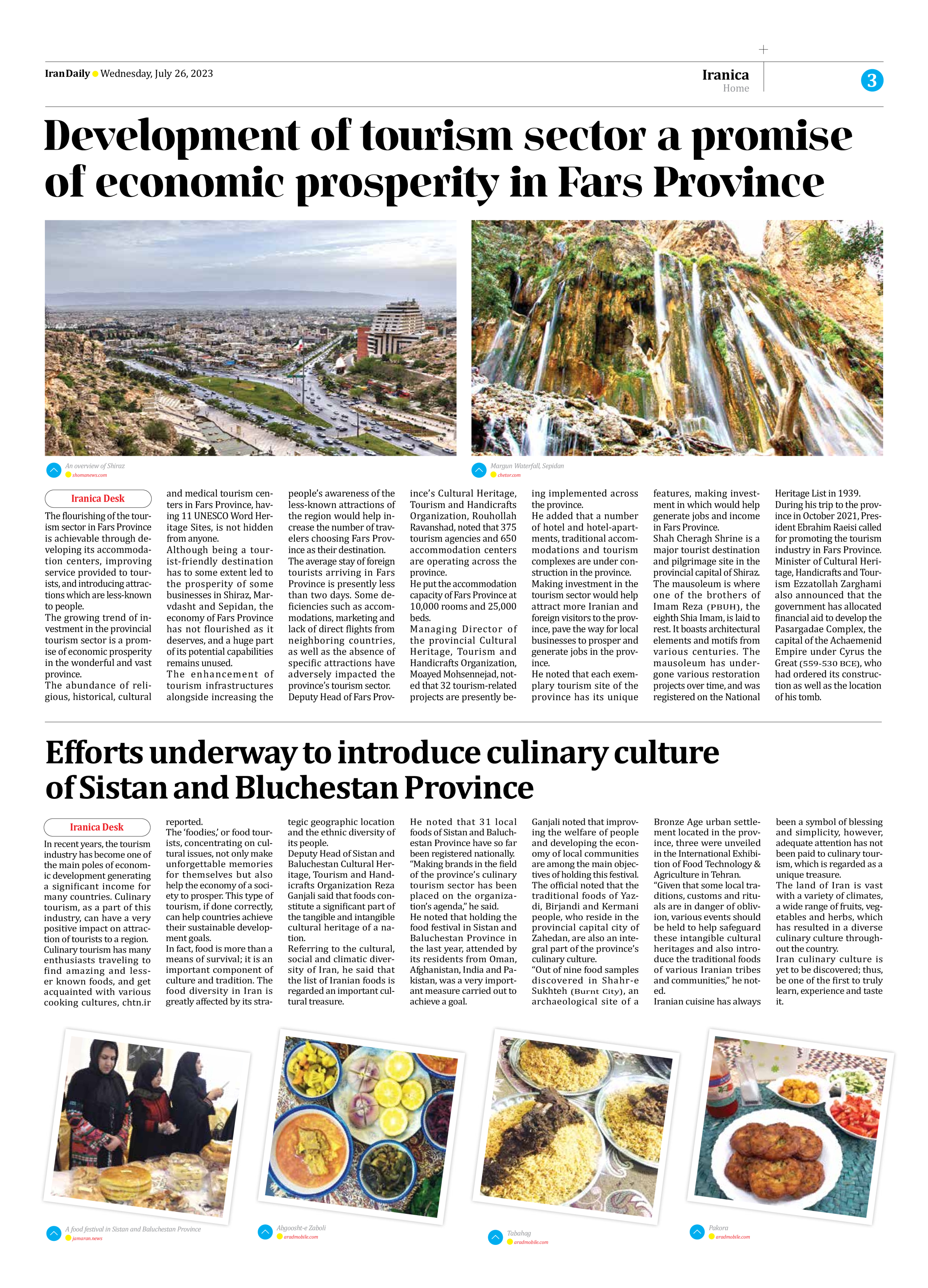
Efforts underway to introduce culinary culture of Sistan and Bluchestan Province
In recent years, the tourism industry has become one of the main poles of economic development generating a significant income for many countries. Culinary tourism, as a part of this industry, can have a very positive impact on attraction of tourists to a region.
Culinary tourism has many enthusiasts traveling to find amazing and lesser known foods, and get acquainted with various cooking cultures, chtn.ir reported.
The ‘foodies,’ or food tourists, concentrating on cultural issues, not only make unforgettable memories for themselves but also help the economy of a society to prosper. This type of tourism, if done correctly, can help countries achieve their sustainable development goals.
In fact, food is more than a means of survival; it is an important component of culture and tradition. The food diversity in Iran is greatly affected by its strategic geographic location and the ethnic diversity of its people.
Deputy Head of Sistan and Baluchestan Cultural Heritage, Tourism and Handicrafts Organization Reza Ganjali said that foods constitute a significant part of the tangible and intangible cultural heritage of a nation.
Referring to the cultural, social and climatic diversity of Iran, he said that the list of Iranian foods is regarded an important cultural treasure.
He noted that 31 local foods of Sistan and Baluchestan Province have so far been registered nationally.
“Making brands in the field of the province’s culinary tourism sector has been placed on the organization’s agenda,” he said.
He noted that holding the food festival in Sistan and Baluchestan Province in the last year, attended by its residents from Oman, Afghanistan, India and Pakistan, was a very important measure carried out to achieve a goal.
Ganjali noted that improving the welfare of people and developing the economy of local communities are among the main objectives of holding this festival.
The official noted that the traditional foods of Yazdi, Birjandi and Kermani people, who reside in the provincial capital city of Zahedan, are also an integral part of the province’s culinary culture.
“Out of nine food samples discovered in Shahr-e Sukhteh (Burnt City), an archaeological site of a Bronze Age urban settlement located in the province, three were unveiled in the International Exhibition of Food Technology & Agriculture in Tehran.
“Given that some local traditions, customs and rituals are in danger of oblivion, various events should be held to help safeguard these intangible cultural heritages and also introduce the traditional foods of various Iranian tribes and communities,” he noted.
Iranian cuisine has always been a symbol of blessing and simplicity, however, adequate attention has not been paid to culinary tourism, which is regarded as a unique treasure.
The land of Iran is vast with a variety of climates, a wide range of fruits, vegetables and herbs, which has resulted in a diverse culinary culture throughout the country.
Iran culinary culture is yet to be discovered; thus, be one of the first to truly learn, experience and taste it.







